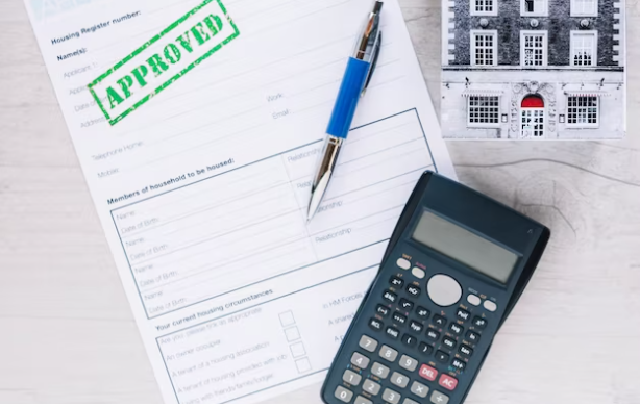Picture this: you’re sailing smoothly when suddenly, you hit a patch of rough seas – an unexpected job loss. That’s when an emergency fund, your financial lifeboat, comes in handy.
An emergency fund is a money set aside for rainy days – unexpected car repairs, medical expenses, or in our case, unemployment. It’s your buffer against the financial shocks life can throw your way.
When job loss strikes, you lose more than just a paycheck. It’s your regular income, your financial stability. That’s where your emergency fund steps in. Think of it like a backup parachute, ready to catch you when you’re free-falling.
Remember, an emergency fund isn’t an investment or a luxury – it’s a necessity. It’s the lighthouse guiding you through the stormy seas of unemployment and beyond.
Interest Rates for Common Emergency Fund Accounts in the UK
| Account Type | Typical Interest Rate | Accessibility | Risk Level |
| Regular Savings Account | 0.1% – 0.5% | High | Low |
| High-Yield Savings Account | 0.5% – 2.0% | Moderate | Low |
| Money Market Account | 0.3% – 1.5% | Moderate | Low |
| Short-Term CDs | 0.5% – 1.5% | Low | Low |
Steps to Building an Emergency Fund
Creating an emergency fund may seem daunting, like climbing a steep mountain.
Step 1: Know Your Number
Your emergency fund is personal to you.
- Pad the Total: Once you have your monthly total, multiply it by the number of months you want to cover. Remember, life can surprise us. A bit of extra padding can be a lifesaver.
Step 2: Make Your Plan
Saving doesn’t happen overnight. It’s a gradual process, and having a plan can keep you on track.
- Automate Your Savings: Consider setting up automatic transfers to your emergency fund. It’s like having a personal savings assistant.
Step 3: Choose the Right Home for Your Fund
Like you wouldn’t store your favourite book in a leaky basement, you must carefully select where to keep your emergency fund.
- Accessible but Not Too Tempting: Your emergency fund needs to be easily accessible. Consider a separate savings account.
- Look for Interest: While your emergency fund isn’t an investment, it can still earn a little. Look for accounts with a good interest rate.
Step 4: Navigate Financial Hiccups
Even the best-laid plans can face obstacles. But don’t fret. You’ve got options.
- Loans for the Unemployed: If you hit a rough patch, consider options like loans for the unemployed from direct lenders.
- Adjust Your Plan: Life changes, and so can your savings plan. Adjust your savings plan accordingly if your income changes or unexpected expenses arise.
It’s not about how fast you reach your goal but instead that you’re moving towards it. So, put on your financial hiking boots and start climbing that savings mountain.
Utilising an Emergency Fund During Unemployment
The storm has hit, you’re unemployed, and it’s time to deploy your financial lifeboat – your emergency fund. But how best to use it? Let’s dive in.
Step 1: Ration Your Fund
Unemployment is unpredictable.
- Budget Wisely: Calculate your essential monthly expenses – rent, utilities, food. Trim any non-essentials. Prioritise necessities and make your fund last.
Step 2: Stay on Top of Your Bills
Remember, your credit score is like your financial reputation. Keep it healthy, even during unemployment.
- Negotiate with Creditors: They might offer hardship plans or payment deferrals to ease your burden.
Step 3: Keep Your Future Self in Mind
When facing unemployment, it’s easy to forget about the future.
- Avoid Draining Retirement Funds: Tapping into retirement funds can seem tempting, but it can lead to penalties and compromise your future financial health.
- Protect Your Health Insurance: Losing a job often means losing employer health coverage.
Step 4: Rebuild Your Emergency Fund
Eventually, the storm will pass. You’ll find new employment, and it’ll be time to replenish your fund.
- Re-evaluate Your Fund Size: Your recent experience might change your perspective on how much you need. Adjust accordingly.
- Gradually Replenish: Don’t rush to refill your fund. Start slow and increase contributions as your financial situation stabilises.
Use it wisely, make it last, and you’ll weather the storm.
Growth Over Time with Different Interest Rates in GBP
| Initial Deposit (GBP) | 0.5% Growth (1 Year) | 1% Growth (1 Year) | 1.5% Growth (1 Year) | 1% Growth (5 Years) | 1.5% Growth (5 Years) |
| £1,000 | £1,005 | £1,010 | £1,015 | £1,051 | £1,077 |
| £5,000 | £5,025 | £5,050 | £5,075 | £5,255 | £5,386 |
| £10,000 | £10,050 | £10,100 | £10,150 | £10,511 | £10,772 |
Tips for Getting Loan If You Have Very Bad Credit
Understanding your credit score is step one. It’s like reading the map before starting a road trip. Get a free report, understand what factors pull you down and work on them.
Choosing Allies: Find the Right Lender
Like friends for every mood, there are lenders for every credit score. Some direct lenders specialise in offering loans to those with bad credit.
Pick Your Battle
Personal loans, secured loans or credit builder loans can be more attainable when searching for very bad credit loans from direct lenders. Remember, choose the right weapon for the fight.
Tread Lightly: Apply With Caution
Each loan application can affect your credit score. It’s like leaving footprints in the sand. Apply only when you’re confident of approval.
A Friend Indeed: Consider A Co-signer
A co-signer with a good credit score can boost your chances. You’re more likely to get in!
Cutting the Middleman: Direct Lenders
Direct lenders, unlike traditional banks, lend money directly without intermediaries. These knights in shining armour are often more flexible with bad credit borrowers.
Show Me The Money: Prove Regular Income
Regular income is your wildcard. It’s your proof that you can repay your loan. Show it off proudly.
Navigating the loan landscape with bad credit can feel like a mediaeval quest. But with these tips, you’re ready to conquer.
Recommended Emergency Fund Based on Monthly Expenses in GBP
| Monthly Expenses (GBP) | Recommended Fund for 3 Months | Recommended Fund for 6 Months |
| £2,000 | £6,000 | £12,000 |
| £3,000 | £9,000 | £18,000 |
| £4,000 | £12,000 | £24,000 |
| £5,000 | £15,000 | £30,000 |
Conclusion
So, we’ve talked about building and utilising your emergency fund, especially during unemployment. Although difficult, consider it an investment in your future mental health.
Having a cushion to fall back on means less stress and more freedom to make decisions that benefit you in the long term. And when it hits, you’ll be standing strong, ready to weather anything.
So, here’s to you, friend – the prepared, resilient, unstoppable you.

Anna Johnson has more than 11 years of experience in direct lending industry of the UK. She is the Senior Content Editor at 24cashflow where she is leading a large team of loan experts. During her career, she has helped the loan aspirants to use the particular loans in the best way and improve their financial lives and status.
Anna Johnson is known for her in-depth research of the UK loan marketplace, as she has worked with many major lending firms in her career. During her educational phase, she has done a research on ‘Finance Fundamentals for Growing Business’.

